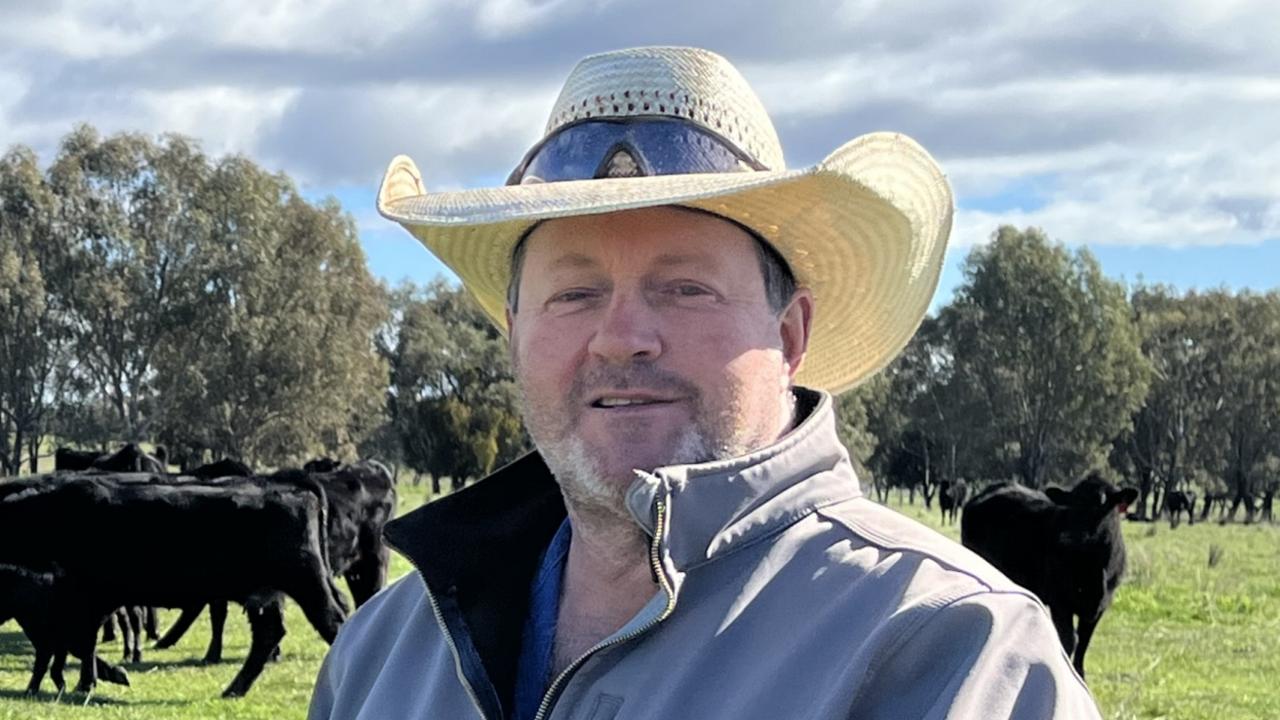Lamb production: Damian Merrett of Apsley raises the baa
LEADING sheep producer Damian Merrett goes for growth, writes FIONA MYERS.

WESTERN Victoria sheep producer Damian Merrett’s management is a prime example of how to turn off lambs profitably.
He sells his entire drop of nearly 9000 prime lambs in just two weeks, consigning them over the hooks.
What’s just as impressive is these lambs, which come straight off their mothers, kill out at more than 26kg carcass weight at about 20 weeks old.
Damian runs his composite sheep flock on about 1410ha of country at Apsley, a mix of country he owns and leases with wife Rebecca, daughters Madeleine and Eliza, and father Kevin.
It’s ideal country, Damian said, for turning off prime lambs thanks to the high clover content of the pastures.
This allows lambs to have enviable growth rates including reaching export weights as suckers.
Damian crunched some figures this year to work out those growth rates after selling a line of lambs earlier than normal because they were heavy enough. They killed out at 29kg carcass weight.
“We worked out that the lambs had put on 600g a day since they were born, and of course, they would not be doing this early on when they are relying on their mother’s milk,” he said.
“We’ve always focused on growth rate and having the pastures to be able to maximise this.”
Damian joins about 7000 composite ewes each year, mostly to Primeline rams, with a portion of the flock joined to Poll Dorsets. So happy has he been with the performance of the Primeline progeny that he plans to switch to more of them.
“There is demand for our surplus composite ewe lambs and they are making more than kill value so that’s why we see potential in having all composites,” he said.
The Merretts breed their own replacement ewes, selecting the breeders usually from ewes that have had twins.
“We want to build up the fertility in our flock,” Damian said.
“This year we marked 142 per cent of lambs to ewes joined and we’d like to ideally get that up to 150 per cent.”
YOUNG GUNS
DAMIAN joins ewe lambs at eight months, and aims to get these ewe lambs at 50-60kg liveweight by this age.
This year, these ewe lambs achieved a lambing percentage of 115 per cent. All ewes are scanned for singles and twins; single-bearing ewes are given less feed to try to stop them from getting too fat. Twin-bearing ewes are given more feed to try to achieve higher birthweights in their progeny.
Rams are selected on a mix of visual assessment and performance data, with good figures not enough to sway Damian to buy unless the structure is right.
“We are looking at growth rate but also at the figures for the highest number of lambs weaned,” he said.
“We want the genetics to be there and then it is all about management from then on.
Rams are put out in late December for an eight-week joining, with most of the resulting lambs in June coming in a four-week period. Any later lambing ewes are run separately.
There are some things the Merretts do that set them apart from other prime lamb producers.
One of those is that they do not wean their lambs, allowing them to run with their mothers until they are sent to the processor.
“They are clearly not getting much milk from their mothers at this stage, but they have the companionship and we are all about ensuring the lambs have the best growth rate they can,” Damian said.
“It can mean that the ewes don’t get much of a break between when the lambs are taken off and when they are joined again, but we get around this by flushing the ewes by feeding them beans or peas so they begin to cycle before the rams go in.
“Some others may not think this the way to do it, but it works very well for us.”
RING BEARER
ANOTHER management technique they use is to make their wether lambs into cryptorchids.
This means the testicles are pushed up into the body and held there by a ring, rather than a ring being put on the purse and the testicles being held down and eventually falling off.
“We have been doing cryptorchids for about 25 years and because we are selling them at a young age, there is no taint in the meat and their growth rates are higher,” Damian said.
“It’s something we do ourselves rather than get a contractor as it really does need to be done carefully, as having stags or ram lambs working would not be good.
“Those wether lambs might me leaner, but the industry wants red meat and not fat and that is what we are trying to maximise.”
The June-lambing flock has all the lambs turned off by the end of November, a system that matches the feed supply. When there is the peak feed availability in spring the stocking rate is maximised.
And those lambs are all gone by the time the feed starts to taper off in late November/December, decreasing the stocking rate.
It’s a busy time in November as lambs are drafted and sent, almost on a daily basis, for the two-week selling period.
What is equally as impressive is that there is very little, if any, tail in the run each year.
“There will be very, very few lambs that don’t make it on to the truck,” Damian said.
“We want our lambs to put on weight as quickly as they can, and we need to make sure the clover is there for them.
“Clover is caviar for the lambs and it delivers the results. In a good year our lambs are killing out at 51 per cent yield.
“We have no irrigation and no ability to finish lambs later so we need early good growth rates and then to sell them.”


